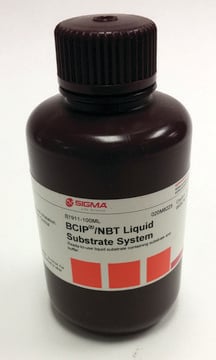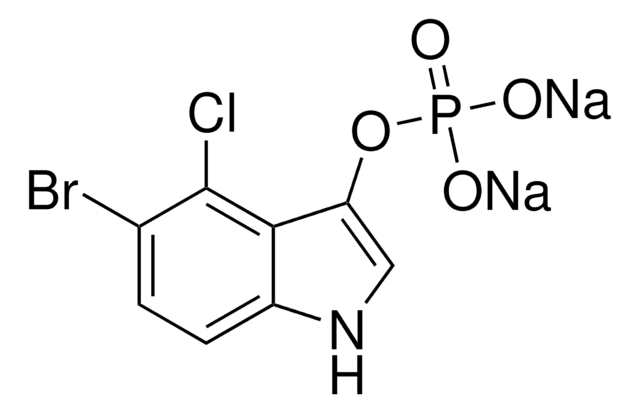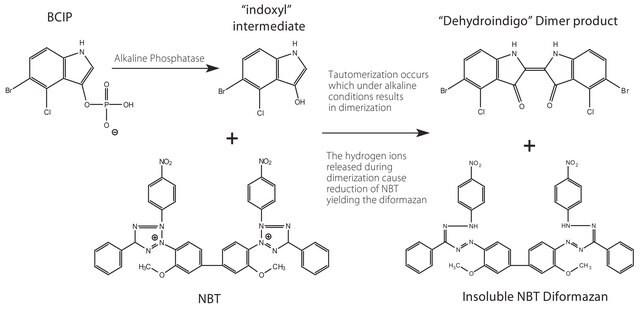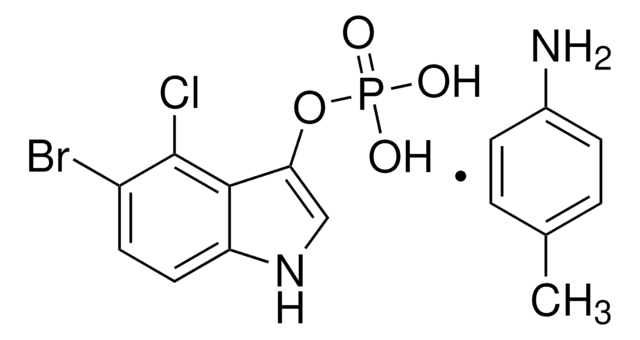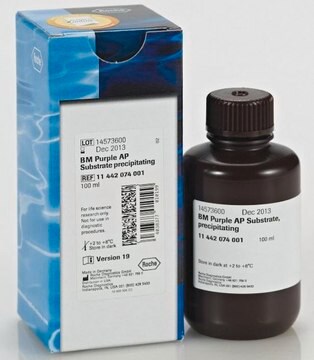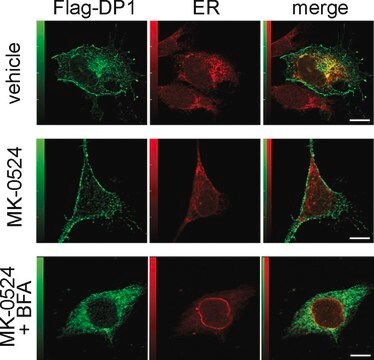72091
NBT-BCIP® solution
BioReagent, suitable as substrate for alkaline phosphatase in dot blots
Sinónimos:
BCIP®/NBT, NBT-X-phosphate
About This Item
Productos recomendados
grado
suitable as substrate for alkaline phosphatase in dot blots
Nivel de calidad
Línea del producto
BioReagent
formulario
liquid
solubilidad
0.1 M Tris-HCl, pH 7.4: 0.0175 mL/mL, clear
aplicaciones
diagnostic assay manufacturing
hematology
histology
temp. de almacenamiento
2-8°C
cadena SMILES
[Cl-].[Cl-].Cc1ccc(N)cc1.OP(O)(=O)Oc2c[nH]c3ccc(Br)c(Cl)c23.COc4cc(ccc4-[n+]5nc(nn5-c6ccc(cc6)[N+]([O-])=O)-c7ccccc7)-c8ccc(c(OC)c8)-[n+]9nc(nn9-c%10ccc(cc%10)[N+]([O-])=O)-c%11ccccc%11
InChI
1S/C40H30N10O6.C8H6BrClNO4P.C7H9N.2ClH/c1-55-37-25-29(13-23-35(37)47-43-39(27-9-5-3-6-10-27)41-45(47)31-15-19-33(20-16-31)49(51)52)30-14-24-36(38(26-30)56-2)48-44-40(28-11-7-4-8-12-28)42-46(48)32-17-21-34(22-18-32)50(53)54;9-4-1-2-5-7(8(4)10)6(3-11-5)15-16(12,13)14;1-6-2-4-7(8)5-3-6;;/h3-26H,1-2H3;1-3,11H,(H2,12,13,14);2-5H,8H2,1H3;2*1H/q+2;;;;/p-2
Clave InChI
GDPIIVBVMSORRQ-UHFFFAOYSA-L
¿Está buscando productos similares? Visita Guía de comparación de productos
Forma física
Otras notas
Información legal
Producto relacionado
Código de clase de almacenamiento
10 - Combustible liquids
Clase de riesgo para el agua (WGK)
WGK 2
Punto de inflamabilidad (°F)
152.6 °F - closed cup
Punto de inflamabilidad (°C)
67 °C - closed cup
Equipo de protección personal
Eyeshields, Gloves, type ABEK (EN14387) respirator filter
Certificados de análisis (COA)
Busque Certificados de análisis (COA) introduciendo el número de lote del producto. Los números de lote se encuentran en la etiqueta del producto después de las palabras «Lot» o «Batch»
¿Ya tiene este producto?
Encuentre la documentación para los productos que ha comprado recientemente en la Biblioteca de documentos.
Los clientes también vieron
Nuestro equipo de científicos tiene experiencia en todas las áreas de investigación: Ciencias de la vida, Ciencia de los materiales, Síntesis química, Cromatografía, Analítica y muchas otras.
Póngase en contacto con el Servicio técnico